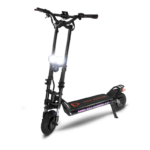In the ever-expanding realm of online commerce, where competition is fierce and attention spans are fleeting, the significance of Search Engine Optimization (SEO) for e-commerce sites cannot be overstated. SEO serves as the invisible force that propels products into the spotlight, ensuring they are not only seen but also chosen by the discerning online shopper. This article delves into the nuances of SEO for e-commerce sites, exploring essential strategies, best practices, and the pivotal role SEO plays in shaping the success of digital storefronts.
The Dynamics of SEO for E-commerce:
1. Keyword Research and Mapping:
- The foundation of effective e-commerce SEO lies in comprehensive keyword research. Identify and prioritize keywords that align with your products, target audience, and search intent. Map these keywords strategically across product pages, categories, and meta tags to maximize visibility.
2. On-Page Optimization:
- Optimize product pages with precision. Craft compelling product descriptions, utilize high-quality images, and incorporate relevant keywords naturally. Pay attention to on-page elements such as meta titles, meta descriptions, and header tags, ensuring they are both user-friendly and search engine-friendly.
3. User Experience (UX) Optimization:
- User experience is integral to SEO for e-commerce. Streamline navigation, enhance page load speed, and ensure mobile responsiveness. A seamless and enjoyable user experience not only satisfies customers but also aligns with search engine algorithms, positively impacting rankings.
4. Content is King:
- Develop a content strategy that goes beyond product listings. Incorporate a blog or resources section to provide valuable content related to your products or industry. This not only engages users but also contributes to building authority and attracting organic traffic.
5. Product Schema Markup:
- Implement product schema markup to provide search engines with structured data about your products. This enhances the visibility of rich snippets in search results, displaying additional information such as prices, reviews, and availability, which can significantly increase click-through rates.
6. Local SEO for Physical Stores:
- If your e-commerce business has physical stores, leverage local SEO strategies. Optimize Google My Business profiles, encourage customer reviews, and ensure accurate business information. This is crucial for attracting local customers searching for your products.
Best Practices for E-commerce SEO:
1. Optimize for Voice Search:
- With the rise of voice-activated devices, optimizing for voice search is paramount. Focus on natural language and conversational keywords, as voice searches tend to be more conversational in nature.
2. Leverage Long-Tail Keywords:
- Long-tail keywords are specific and often reflect user intent more accurately. Incorporate these into your product descriptions and content to capture niche audiences and improve the chances of ranking for specific queries.
3. Secure and Mobile-Friendly Websites:
- Search engines prioritize secure and mobile-friendly websites. Ensure your e-commerce site has an SSL certificate for security, and optimize it for mobile devices to cater to the growing number of users shopping on smartphones and tablets.
4. Implement a Strategic Internal Linking Structure:
- Internal linking helps distribute link equity throughout your site and improves navigation. Create a logical and strategic internal linking structure that guides users and search engine crawlers through your product categories and related content.
5. Monitor and Optimize for Site Speed:
- Page load speed is a crucial factor in both user experience and SEO. Regularly monitor your site’s speed and optimize images, code, and server response times to ensure swift and smooth interactions for users and search engines alike.
The Role of Backlinks in E-commerce SEO:
1. Quality Over Quantity:
- Focus on acquiring high-quality backlinks from reputable sources. A few authoritative backlinks are more valuable than a multitude of low-quality ones. Quality backlinks enhance your site’s credibility and contribute to higher search engine rankings.
2. Influencer Collaborations:
- Consider collaborating with influencers or industry experts to generate natural backlinks. Influencers can create content or reviews related to your products, providing valuable endorsements that attract both users and search engine algorithms.
3. User-Generated Content:
- Encourage user-generated content, such as reviews and testimonials. Not only does this build trust among potential customers, but it also creates valuable content that can attract organic traffic and contribute to your site’s SEO.
Conclusion: Elevating Your E-commerce Presence with SEO Mastery
In the bustling marketplace of e-commerce, where the digital shelf is crowded with countless products, SEO stands as the key differentiator between visibility and obscurity. By meticulously implementing the strategies outlined above, e-commerce sites can navigate the complexities of search engine algorithms, captivate their target audience, and secure top positions on search results pages. In the evolving landscape of online retail, mastering the art of SEO for e-commerce is not just a strategy; it’s a necessity for those aiming to thrive and stand out in the competitive digital marketplace.



